Philly 13 Weeks of Adventure: Week 3 - Shofuso Japanese Cultural Center
A traditional-style Japanese house and nationally ranked garden in West Fairmount Park.
Welcome to Love + Travel, where the journey of inner and outer landscapes is the same.
Check out Week 2 - Center City SIPS from Philly’s 13 Weeks of Adventure series. You can also view the entirety of my writing, here.
A couple of updates:
I’m entering the second week of visiting family and friends in Florida. The heat has made midday naps inevitable. My creative meter is recharging. Nature is healing.
Also entering its second week is Union DC33’s strike in Philadelphia. Mounds of trash continue to pile up alongside the union members’ grievances. I love the above quote because ALL labor has dignity. Everyone deserves to be paid a livable wage. Let’s see how long this continues.
I was interviewed for
’s “Let’s Talk Therapy” series, where readers gain a deeper sense of how therapy can look and feel. The piece will go live on 8/11. In the meantime, if you’re not familiar with Kaitlyn’s writing, she creates one of my favorite newsletters, dialoguing. Her writing is vulnerable, insightful, and jam-packed with resources, since she daylights as a psychotherapist. In short, she keeps it real, I enjoyed this recent piece from her and think you might too.
If there's a beautiful, historic garden in a city, you can bet I’ll make time to visit. But at the Shofuso Japanese Cultural Center, the garden is only half the story. Elements of Japanese architecture meet you before you even enter the grounds. The white walled exterior has a scalloped awning running along the top, and the main building’s curved eaves roof presents unmistakable Japanese elements that confirm you’ve arrived at the right place.
Shofuso is a 17th-century style Japanese house designed by Junzo Yoshimura as part of “The House in the Museum Garden” series for New York City’s Museum of Modern Art. The house was built in Japan, disassembled, then shipped to New York to be put back together for display. At the conclusion of its exhibition it was gifted to the city of Philadelphia.
For over 150 years, there has been a Japanese presence in this area of Fairmont Park. Beginning with the 1867 Centennial Exposition, Philadelphia played host to the first Japanese garden in North America. Eventually a nio-mon, or temple gate, from a Japanese Buddhist temple was added to the garden in 1905, but when it burnt down in 1955, Shofuso was brought in two years later and the garden was redesigned to create a cohesive landscape.
After gaining entry onto the grounds, I chose to tour the garden first. It’s a beautiful layout with lots of bamboo surrounding the property. This area of the park isn’t particularly noisy, but it does insulate the area from the sparse traffic that passes. Japanese landscape designer Tansai Sano, creates a contrast between the house’s straight lines with the garden’s winding paths to perfectly create a balanced experience between the spaces. My favorite part of the outdoor space is the humongous koi fish in the pond. No lie, they are on average about a foot and a half long, and are definitely accustomed to being fed. Fish food is available for purchase at the front desk. It seems like patrons make sure they do not miss any meals.
After checking out the plants, stonework, and hidden elements (don’t miss the Buddah statue hidden by bamboo near the end of the walkway!) I headed inside. Tours of the space are self-guided. Each room within the house features a placard which goes into detail about how it would have been used in the 17th century and the ways the materials bring the outdoors indoors. In Japanese tradition, no shoes are worn in the home, so I removed my sandals before entering (socks were provided) and culture aside, it’s for good reason. This entire structure is created from materials that are native to Japan, and as such, any wear and tear or damage would have to be replaced and repaired by craftsmen from the country. In fact, in 2010, the Japanese Forestry Department had to approve the cutting and shipping of the cypress used in the hinoki roof’s restoration. It is the only one of its kind outside of Japan.
On the back porch, a large overhang provided perfect coverage from a sudden downpour. Jean, one of the staffers, shared so much context about the house and encouraged a return during cherry blossom season or for a tea ceremony where guests have a chance to enter off-limit areas of the home. From within, the grass isn’t visible, and the serenity of the house seems to run smoothly into the water. This is definitely the place to visit if you want to be removed from the everyday.
Learned something new? Like, share, or comment to help expand this post’s reach. You can also upgrade your subscription, buy me a coffee, or add a book to my library to tangibly support the work.
LET ME KNOW
Have you ever been to Japan? What cities or experiences do you recommend?
Which is your fav: Flower garden, vegetable garden or water garden?
Do you wear shoes in your house?
I forget about Philly being the center of the nation’s formation and, thus, diplomatic relations. Are there any other cities you can think of that don’t hold modern-day weight but were central to US history centuries ago?




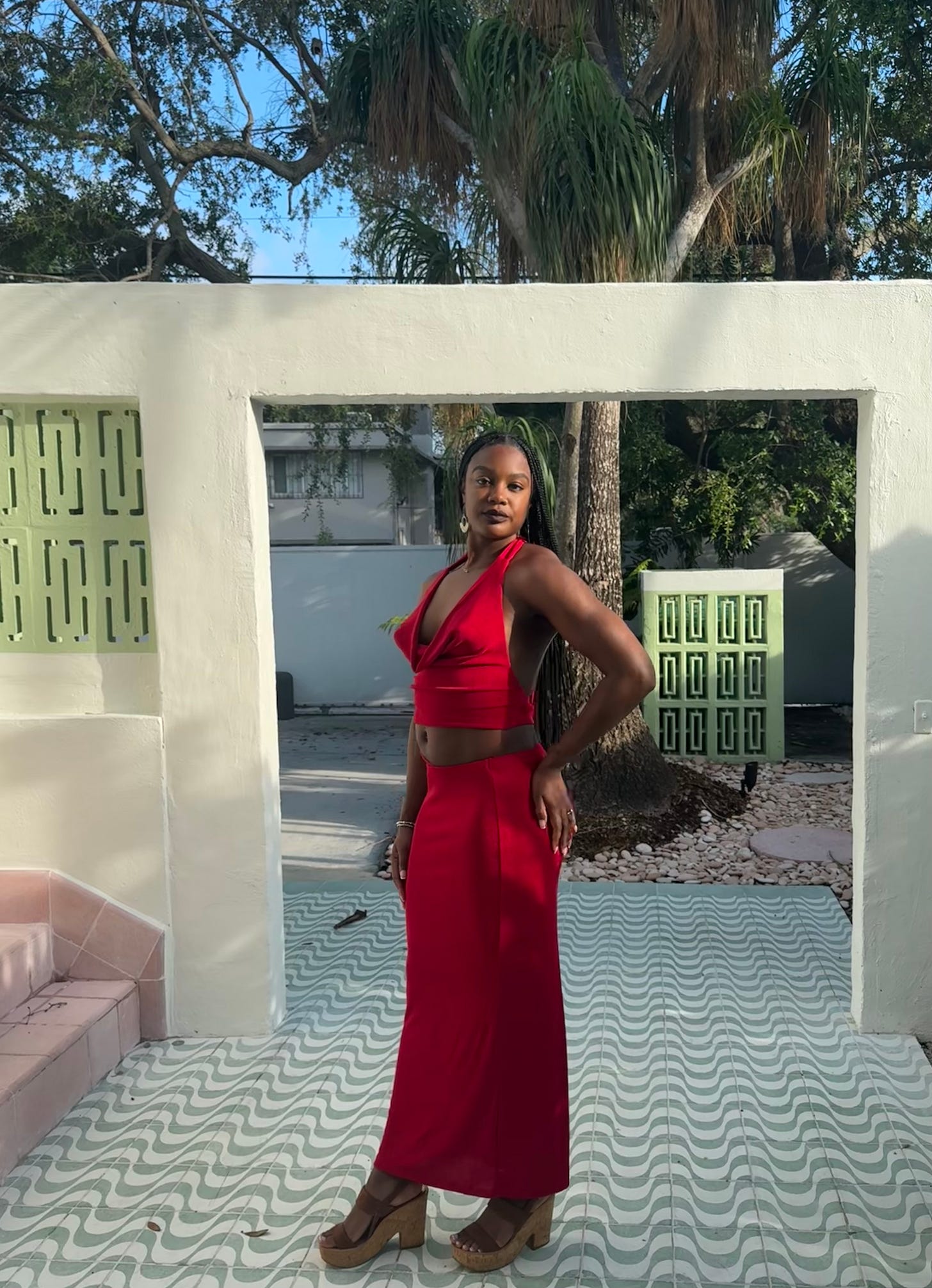



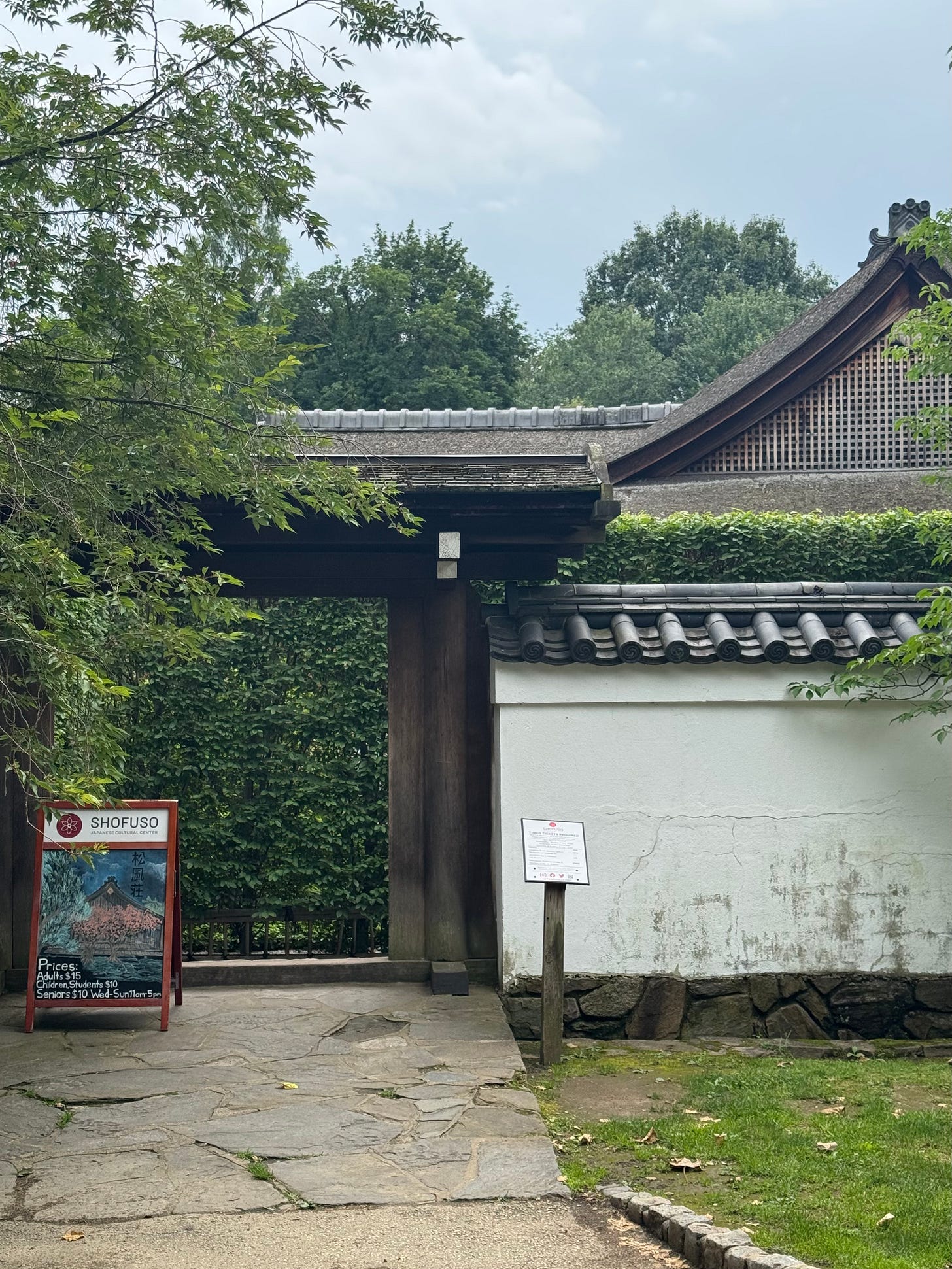
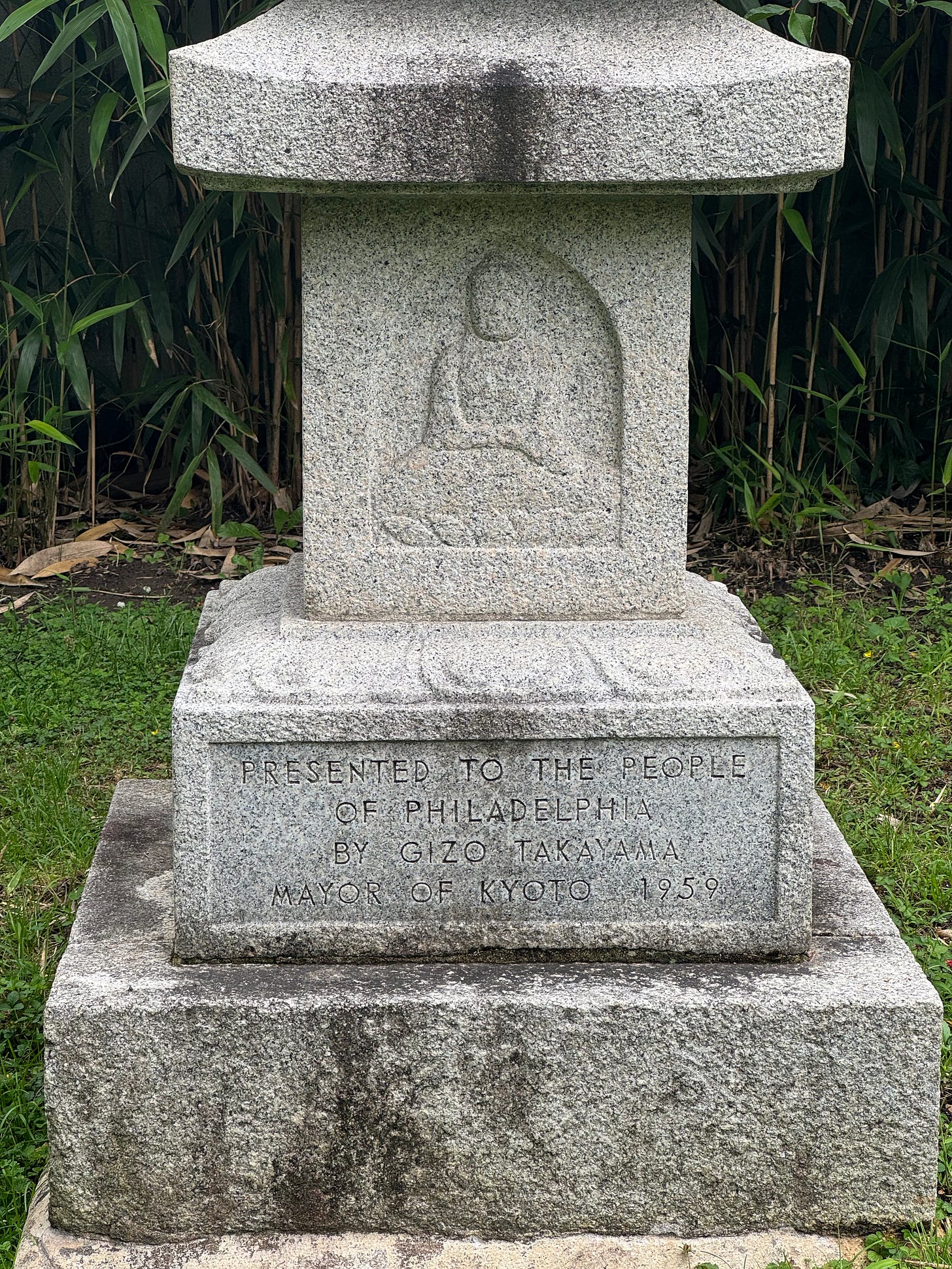
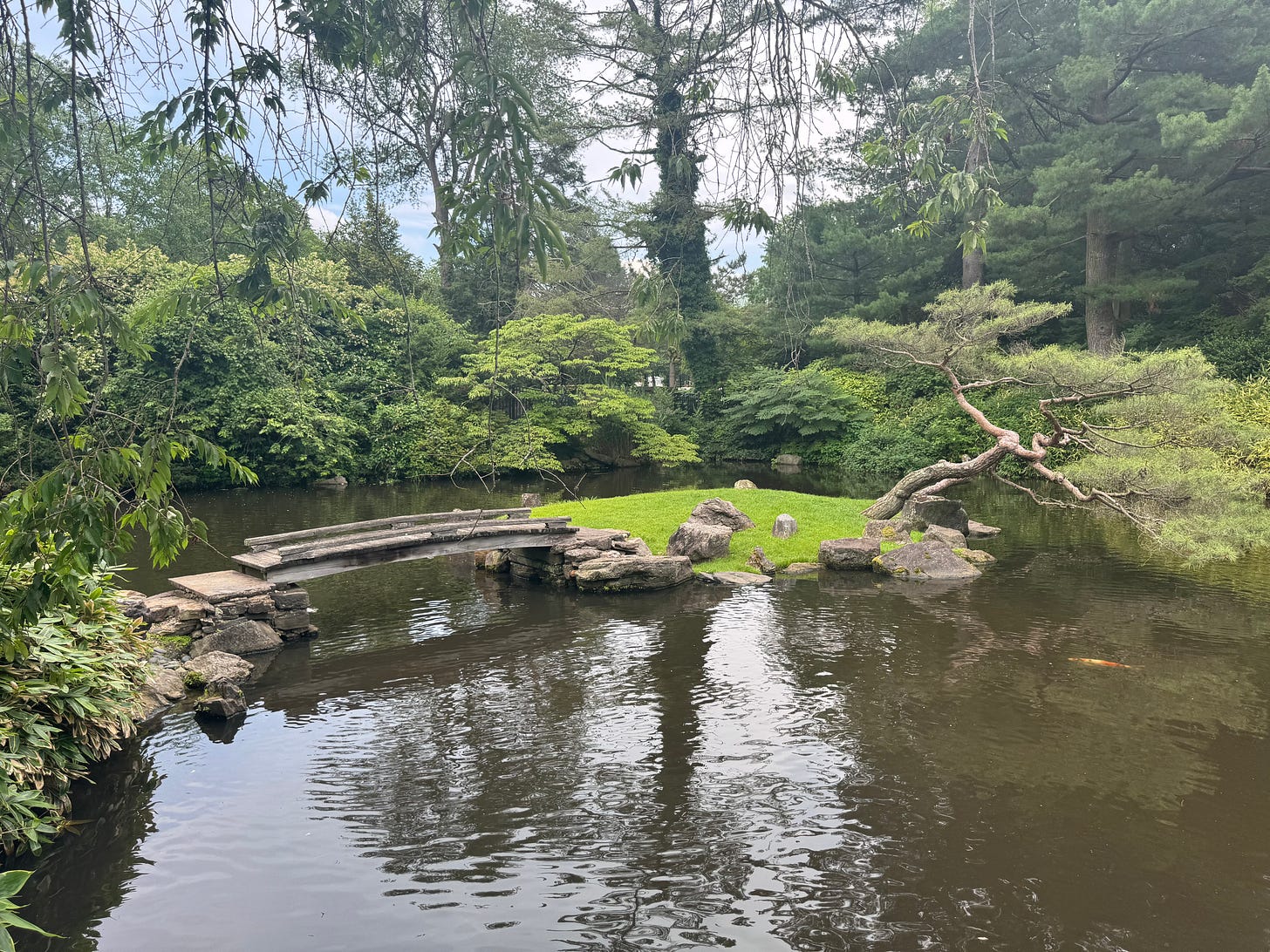
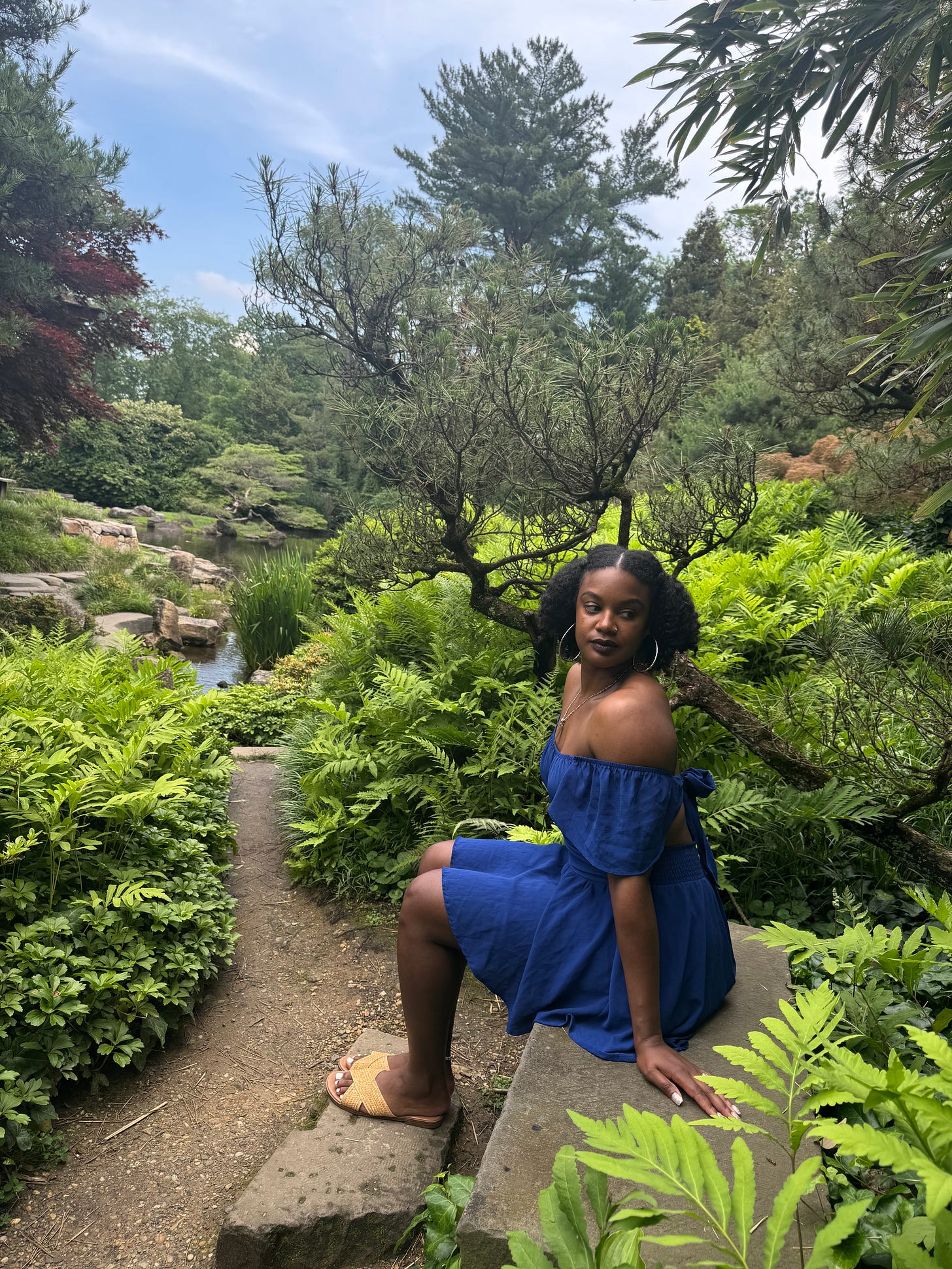


Lovely. And what big koi! I'd love to visit Japan and explore its cities and countrysides. One day. Shoes that I put on to go with an outfit for a particular outing I do wear through the house. But everyday shoes that I run errands and chores in? They are removed at the door.
This was so beautiful. I felt transported. I’ve never been to Japan (nor Philly, so loving this series). Japan is definitely one of the big trips we want to make happen. I have a sense it will open me up to parts of myself that don’t feel they have room to grow here in the US.
Can’t wait for your interview to go live. I’m so appreciative of you participating. 💛